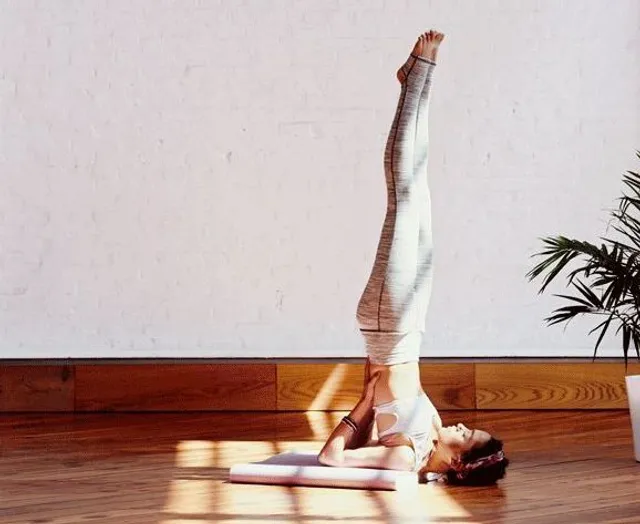
SALAMBA SARVANGHASANA
SALAMBA SARVANGASANA, the balance on the shoulders is the Queen or the mother of the postures.
This inversion posture, contrary to what one might think, is a leg posture. Extending the legs in inversion requires a lot more energy than when you have the feet that can press into the ground. It is a good preparatory posture to learn how to straighten the legs in all other inversions like Sirsasana, Pincha mayurasana or Adho Mukha Vriksasana because it is more stable and less impressive.
Depending on mood and mastery, this posture can be invigorating for beginners or soothing for advanced.
Stimulating at the start of the day and soothing at the end as soon as it is mastered. It has a great power to improve the mental faculties (memory, concentration).
On a physical level, it stimulates the thyroid gland, promotes venous return and relieves heavy legs, tones the legs, buttocks, abdomen and spine. It promotes the digestive and respiratory system, stretches and also strengthens the neck. The fact of having the weight of the body on the shoulders, the trapezius muscles and the neck (zones of usual tension) requires them to be released, to better settle in a pleasant stability.
On the mental level, the blood flow being activated towards the brain, this posture creates a cerebral refreshment. Since the body is not used to being in inversion, this posture requires a sense of balance and can at first create anxiety, once mastered it gives self-confidence and the need to letting go in a situation of discomfort. Taking this unusual position of the body can lead us to reflect on this new discomfort, on this notion of the impermanence of our daily security. It forces us to be more mentally vigilant, which can become a faculty of adaptation in everyday life. Fixing the body in inversion in the air in balance makes the body considerably lighter and a flexible mind.
Because of the flexion of the neck, it is imperative to put height under the shoulders and not to practice this posture in the event of cervical problems or any other health problem applied to inversions (women who are menstruating, pregnant who do not master the posture , glaucoma, …)
Access the annotated class sequence with posture images and join the community of teachers!